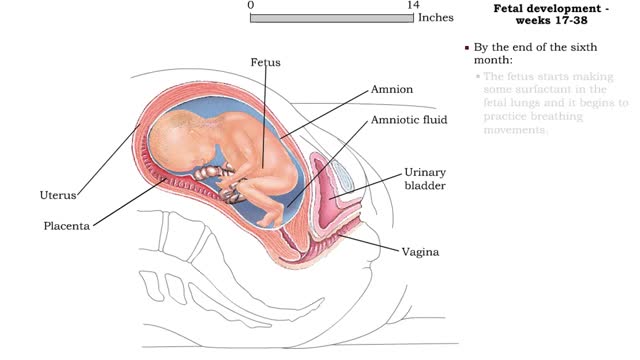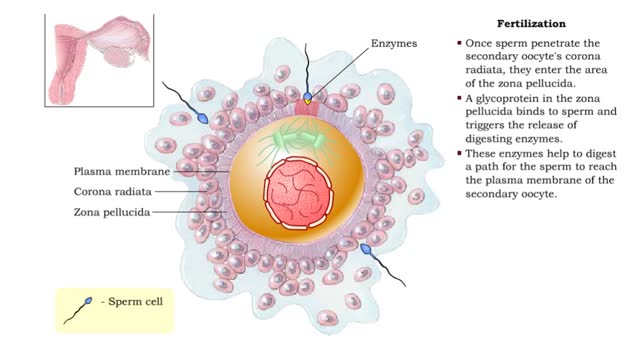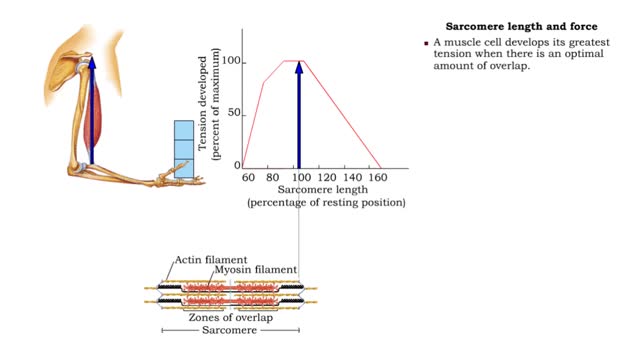Search Results
Results for: 'ED'
Fetal development - Weeks 9 to 38
By: HWC, Views: 11232
Weeks 9-12 • Fetal development during the third month includes: • A large head, about 1/2 the length of the fetus. • Visible eyes and ears. • A detectable heartbeat. • Kidneys that form urine. • Gender identification. • Weak, undetectable body movements. • By the e...
Embryonic development - Week 3
By: HWC, Views: 11101
Week 3 (gastrulation) • Three primary germ layers are formed which provide cells for organ formation in the following months. • These germ cell layers are formed by a process known as gastrulation, which involves rearranging epiblast cells. • As cells from the epiblast migrate, a fain...
Muscle Twitch and Muscle Tension - Motor unit size and force
By: HWC, Views: 11252
• A motor unit is a group of muscle cells controlled by a single neuron. • A stimulus of sufficient intensity will cause all the cells in the motor unit to contract. • A single contraction, caused by a single action potential, is called a muscle twitch. • Latent period: A brief per...
Embryonic development - week 1 and 2
By: HWC, Views: 11062
The first through eighth weeks after fertilization are called the embryonic. Week 1 • Within a day, the zygote begins mitotic cell division (cleavage) forming blastomeres. By the 4th day, the blastomeres have formed a solid ball called a morula. • The morula enters uterine cavity ar...
Frequency of stimulation and force (Recruitment of motor units and force)
By: HWC, Views: 11340
• Muscle tension depends on the frequency of stimulation. • Muscle twitch: First stimulus. • Wave summation: When a second stimulus excites a partially relaxed muscle, producing a stronger contraction. • Unfused tetanus: Successive stimulations at the same frequency, producing a se...
By: HWC, Views: 11452
• Fertilization is the process by which the two gametes from the parents fuse their genetic material to form a new individual (zygote). • Fertilization requires that sperm cells swimming through the uterine tube contact a secondary oocyte. • Once sperm penetrate the secondary oocyte's ...
Factors that influence muscle tension - Sarcomere length and force, understretched and overstretched
By: HWC, Views: 11130
• Muscle tension generated through the contraction of muscle cells provides the force necessary for the muscular system to function. • The amount of tension produced depends on several factors: • Sarcomere length Frequency of stimulation • Motor unit size • Recruitment of moto...
Role of ATP in muscle movement
By: HWC, Views: 11131
• Muscle cells use ATP to power contraction and movement. • The hydrolysis of ATP to ADP releases • ATP can be regenerated by adding to ADP. • During muscular contraction, ATP molecules: • Energize the myosin head • Detach myosin from actin • ATP must be then regenerat...
By: HWC, Views: 11228
• The amount of ATP stored in a skeletal muscle cell can only provide muscular activity for two to three seconds. • Muscle cells must be able to generate additional molecules of ATP to continue contracting. • Muscle cells can generate ATP from several processes: • Phosphogen syste...
Advertisement











